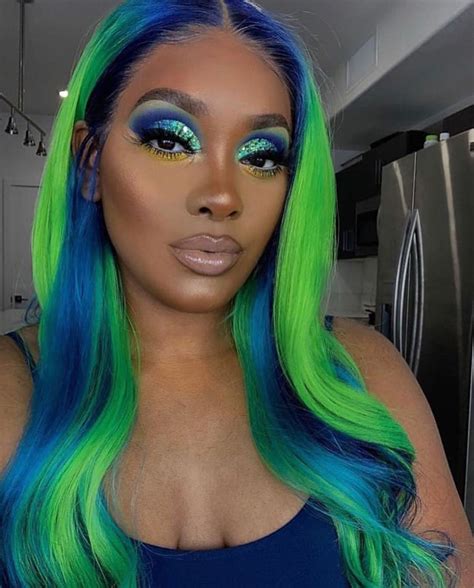Introduction

Wigs have become an essential part of the African American haircare routine, providing versatility, protection, and style. With countless options available, finding the perfect wig for your unique needs can be a daunting task. This comprehensive guide will explore the different types of wigs for African American hair, their benefits, and tips for choosing and maintaining the perfect one for you.
Types of Wigs
1. Lace Front Wigs (LFWs)
LFWs use a sheer lace cap to create the illusion of a natural hairline. They allow for versatile styling, including ponytails and updos, and are available in a wide range of textures and colors.
2. Full Lace Wigs (FLWs)
FLWs are made of a thin, flexible lace that covers the entire head. They offer the most natural appearance and can be styled in any way imaginable. However, they are more expensive than other types of wigs.
3. Synthetic Wigs
Synthetic wigs are made from artificial fibers that mimic human hair. They are affordable, durable, and come in a wide variety of colors and styles. However, they may not look as natural as human hair wigs.
4. Human Hair Wigs
Human hair wigs are made from real human hair, giving them the most natural appearance and feel. They are the most expensive type of wig and require regular maintenance.
Benefits of Wigs
- Protection: Wigs protect natural hair from heat damage, styling products, and environmental factors.
- Versatility: Wigs allow you to change your hairstyle and color instantly.
- Style: Wigs come in a wide range of styles, from sleek and sophisticated to edgy and glamorous.
- Time-Saving: Wigs can save time on styling and maintenance, especially for those with limited time.
Choosing the Right Wig
- Face Shape: Consider your face shape when choosing a wig. Oval faces can wear most styles, while round faces look best with long, straight wigs, and square faces suit angled or textured wigs.
- Texture and Density: Match the texture and density of the wig to your natural hair. If your hair is fine and thin, opt for a wig with a similar texture and density to avoid overwhelming your natural locks.
- Color: Choose a wig color that complements your skin tone and personal style. If you are unsure, consult a hairstylist for advice.
Maintaining Your Wig
- Wash and Condition: Wash your wig regularly with a specially formulated wig shampoo and conditioner to remove buildup and keep it looking its best.
- Detangle: Gently detangle your wig using a wide-toothed comb or brush designed for wigs.
- Store Properly: Store your wig on a wig stand or in a wig storage bag to prevent tangles and maintain its shape.
- Use Styling Products: Use heat protectant spray before styling your wig and avoid using harsh brushes or combs that can damage it.
Tips and Tricks
- Try on Different Wigs: Don’t be afraid to try on different wigs to find the perfect one for you.
- Customize Your Wig: Cut, style, and dye your wig to achieve the desired look.
- Accessorize: Use headbands, scarves, and clips to personalize your wig and create unique styles.
- Get a Professional Consultation: Consult a hairstylist or wig expert for guidance on choosing and maintaining your wig.
Common Mistakes to Avoid
- Choosing a Wig That’s Too Heavy: Wigs that are too heavy can damage your scalp and cause discomfort.
- Over-Styling: Avoid over-styling your wig, as this can damage the fibers and reduce its lifespan.
- Neglecting Maintenance: Regular washing, conditioning, and detangling are essential to keep your wig looking its best.
- Wearing a Wig for Too Long: Avoid wearing your wig for extended periods of time, as this can lead to scalp irritation and hair breakage.
Conclusion
Wigs for African American hair offer countless benefits and styling possibilities. By understanding the different types of wigs, their maintenance requirements, and the tips and tricks of wig-wearing, you can find the perfect wig to enhance your style and protect your natural hair. Embrace the versatility and beauty of wigs and create stunning looks that will turn heads.
